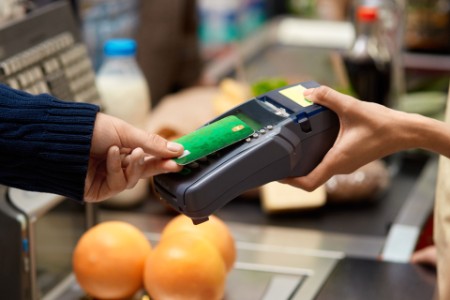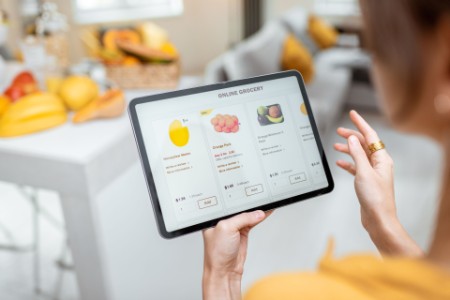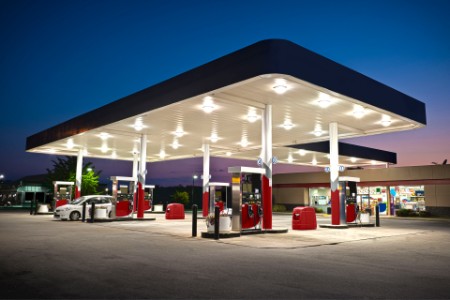
Chapter 1
Hyper-localization
By gathering consumer data, fuel retail companies can create differentiated retail experiences at each fuel retail station.
Today’s customers demand a differentiated experience and this extends to non-fuel retail. More than before, instead of a one-size-fits-all approach, companies need to utilize the most relevant digital tools and technologies available to serve the needs and preferences of fuel retail customers.
Retailers today have the capability to collect huge amounts of data at their sites and combine it with external data. By integrating store and point-of-sale data with third-party data from financial services, telecommunications and social media firms, and comparing it at a postal code level, this large dataset can profile the exact demographics of customers visiting a store. Such demographic information can include the customer’s age, income, driving patterns and shopping style, enabling fuel retail companies to better create a customized retail experience at each fuel retail station and site.

Chapter 2
Hyper-convenience
For the new generation of buyers, technology that makes the shopping experience touchless and quick adds to brand differentiation.
As consumers increasingly adopt digital means for their day-to-day activities, they expect a digitalized fuel retail experience.
Consumers today have already embraced digital consumption models in many ways, where their needs are identified and satisfied in real time and without the need for intermediaries. Such hyper-convenience expectations and trends have started to influence supply chain considerations, such as doorstep fuel delivery, in the fuel retail business.
Fuel retail companies offering non-fuel retail services will need to push the convenience frontier further. For the new generation of buyers, technology that makes the shopping experience touchless and quick adds to brand differentiation. This has led many retailers to increasingly consider cashless stores, automated kiosks, delivery by robot and interactive in-store digital displays.
Combining convenience with a localized experience adds a personalization dimension, which delights customers with easy, fun and adaptable experiences.
Coupling refueling with routine shopping
Another trend that may drive fuel retailing is online, even automatic, routine purchases of products, such as groceries. If consumers buy groceries online, the retailer’s algorithm should be smart enough to present them with a shopping list that is close to what they usually buy on their own. Similarly, fuel retail companies can consider making fuel purchases part of such routines. For example, they could move the pump closer to the store and couple refueling with a drive-through grocery pickup.
While only a small fraction of grocery shopping happens online today, that is expected to change. Time scarcity will make this value proposition too compelling to ignore. Fuel retail companies need to partner with grocery retailers and technology companies to make this proposition work to their advantage.
Managing the bot’s decisions
With self-driving car technology expected to advance from geofenced testing to wide-scale adoption after 2030, there are expectations that the first phase of AVs in the market will be in the form of ridesharing vehicles. While the electric vehicle is an option, given the frequent refueling or charging needs of the ridesharing business, hybrid or internal combustion engine (ICE) vehicles can be expected to form the majority of ridesharing AVs.
There are about 25 million drivers among Asia’s major ridesharing companies.2 Assuming that this equates to 25 million AVs, 50% of which are the ICE type, controlled by bots, then what should fuel retail companies do to ensure they get the maximum share of that market?
The answer varies, but dynamic pricing and strategic locations will be critical. The decision of bots on where to refuel will not be swayed by a better advertisement from a fuel retail company or better coffee at its non-fuel retail store. Bots make decisions based on data and will land on the option that is more economical based on analysis. Loyalty programs can play a key role, and fuel retail companies can implement complex loyalty programs and attract business through them.
Combining the convenience with a localized experience adds a personalization dimension, which delights customers with easy, fun and adaptable experiences.
Key strategic actions
To be ready for changes that will transform their industry, fuel retail companies should consider these actions:
- Invest in a differentiated retail experience that includes, but is not focused on, vehicle fueling
- Merge the fueling experience with other retail experiences beyond those currently provided by conventional convenience stores, as the profitability of fuel retail is closely tied to a convenience store’s shopping experience
- Research fueling habits and how they fit into the consumer’s overall lifestyle, such as harnessing customer data to provide more targeted offerings or as a transition to the connected car and connected home space
- Test alternative business models and evaluate performance based on key metrics that focus on how the retail experience affects brand recognition, brand favorability and the ability to market other alternative energy products (rooftop solar, batteries, shared mobility services) under the same brand
Summary
As the COVID-19 pandemic drives remote working and reduces the need for daily commuting, the quantity of fuel sold has notably decreased. The rise of alternative fuels and autonomous vehicles in the future is expected to reduce demand for traditional fuels and impact fuel retail companies’ revenues.
For fuel retail companies to rebalance their revenue mix and grow customer relationships, hyper-localization and hyper-convenience will be key.


